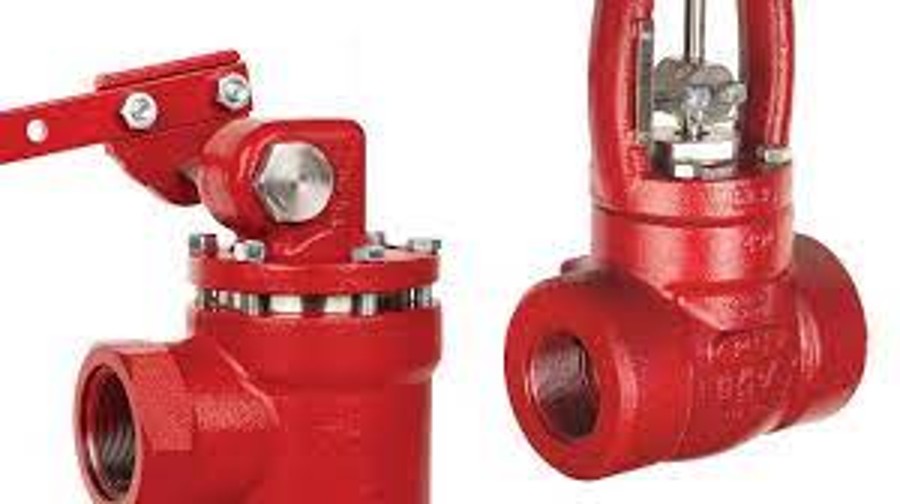Tech
Flow control unleashed: a comprehensive guide to different valve types in manufacturing

Valves play a critical role in manufacturing by controlling the flow of materials, gases, and other substances. Valves can be designed to provide precise control over the open-close cycle, allowing for more efficient production processes. This guide will explore different types of valves commonly used in manufacturing and discuss their functions and applications. Whether you’re a professional engineer or just curious about this technology, we’ll provide the critical information you need to understand valves and their role in industrial processes.
Flanged ball valve
Flanged ball valves are quarter-turn rotary valves used in many industries. As the name suggests, these valves use a flanged connection to attach them to pipelines; this allows for quick and easy installation and maintenance. The internal mechanism of this valve consists of a ball with a hole drilled in the center. When the valve handle is rotated, it aligns the hole in the ball with either the inlet or outlet port of the pipe, allowing fluid to flow through. This type of valve has several advantages, including excellent control over flow rates and tight shutoff capabilities. Flanged ball valves are often used for applications involving higher pressure or temperatures, such as in chemical and petrochemical processing. They can also be used to isolate specific pipeline sections for maintenance purposes.
Angle seat valve
Angle seat valves are pneumatically actuated control valves that use compressed air to open and close the valve. This type of valve features an angle seat, which controls the flow rate. The angle seat valve has a piston and actuator connected to the valve body. When compressed air is passed through the actuator, it pushes against the piston and opens or closes the flow path accordingly. It allows for accurate, controlled regulation of flow rates. Angle seat valves are commonly used in applications involving fluids with high viscosity, such as food processing and chemical production. They also provide reliable shutoff in applications with higher operating pressures or temperatures. Angle seat valves offer several advantages, including fast response times, reasonable control of flow rates, and precise control over the open-close cycle.
Butterfly valve
Butterfly valves are quarter-turn rotary valves that use a disc to control the flow of fluids. The butterfly valve consists of a cylindrical body and a disc-shaped valve that is moved between the open and closed positions. The disc is connected to a stem, which is actuated by a handle or lever. When the handle is rotated, it moves the disc into the fully open or closed position, allowing for precise control over flow rates. This type of valve has several advantages, including its low cost and easy installation. Butterfly valves are often used for applications involving low-pressure and low-velocity fluids, such as water or air. They can also regulate the flow of liquids in various industrial processes. It also provides reliable shutoff in applications where other valve types may not be suitable.
Globe valve
Globe valves are linear motion control valves that use a disc to regulate the flow of fluids. The valve body is designed with a cylindrical shape and a disc-shaped closure element connected to a stem. The stem can be actuated using a handwheel or other external actuator, allowing precise control over the open-close cycle. Globe valves, such as steam and oil pipelines, are often used in high-pressure and temperature applications. They are also used to isolate specific pipe sections for maintenance purposes. The globe valve also has excellent shutoff characteristics, making it ideal for applications with rapid on-off control. Manufacturers use this valve in many industries, including oil and gas production, chemical processing, and water treatment.
Solenoid valve
Solenoid valves are electrically operated control valves that use an electromagnetic coil to move the valve body between open and closed positions. This type of valve typically consists of two parts, the solenoid, and the valve body. When an electric current is passed through the solenoid, it creates a magnetic field that causes the valve body to move and open or close the flow path. Solenoid valves are generally used in applications requiring precise control over the open-close cycle, such as gas control systems or medical equipment. They provide reliable operation even in low-pressure environments and can be used to switch between multiple flow paths. It can control the flow of fluids in a wide range of industries in terms of size, pressure, and temperature.
Diaphragm valve
Diaphragm valves are linear motion control valves that use a flexible diaphragm to regulate the flow of fluids. The body of this type of valve is designed with an inlet and outlet port, as well as a diaphragm connected to an actuator. When the actuator is operated, it pulls or pushes on the diaphragm, allowing precise control over the open-close cycle. Diaphragm valves are often used for applications involving corrosive or viscous fluids, as they can reduce the risk of leakage and corrosion. They are also used in food processing and other industrial processes to regulate the flow of gases or liquids. Manufacturers use diaphragm valves to provide reliable shutoff capabilities and precise control over the flow rates. It also has a high resistance to wear and tear, making it an ideal choice for applications with frequent operation.










